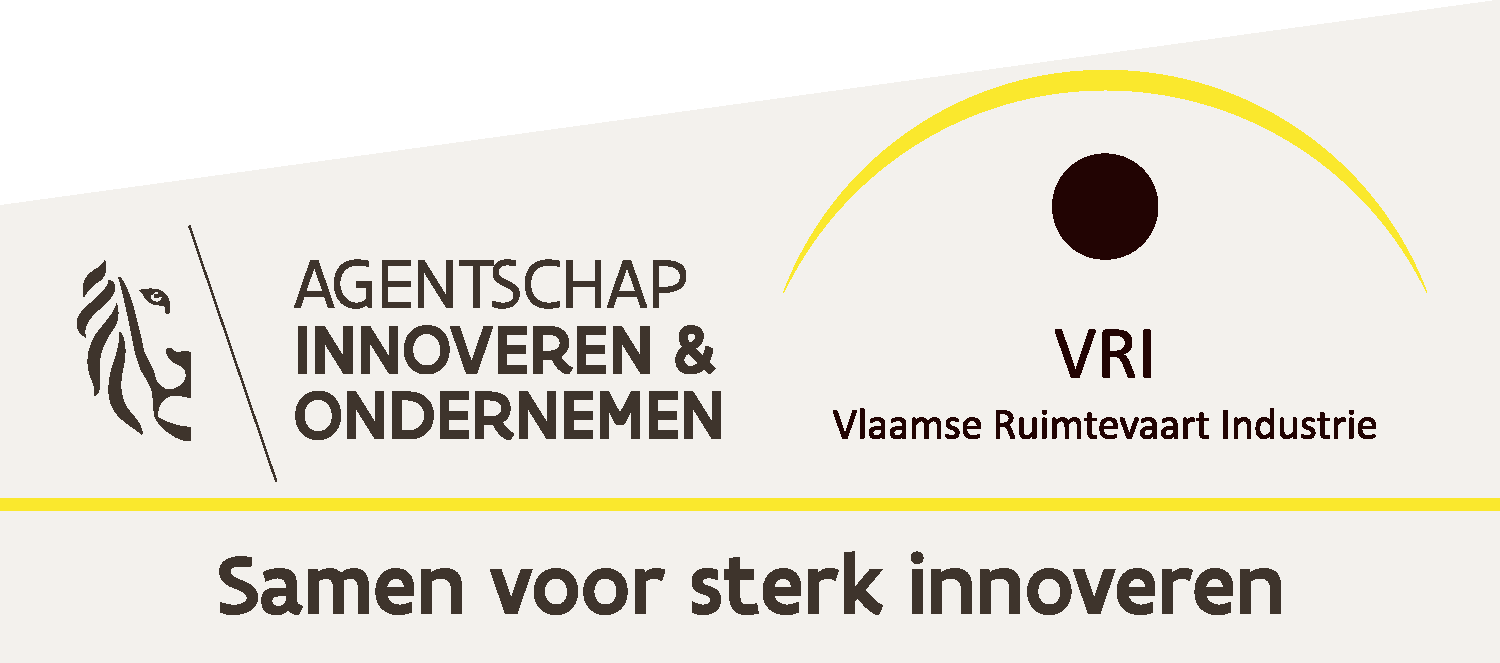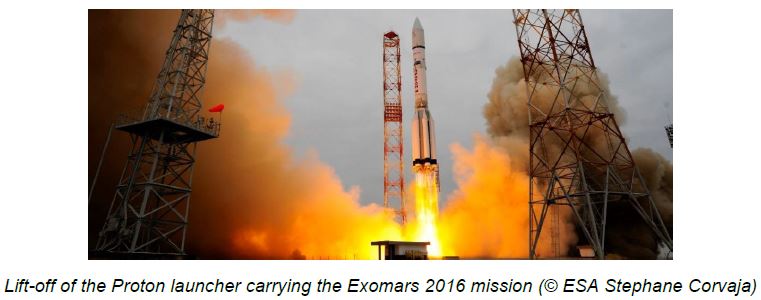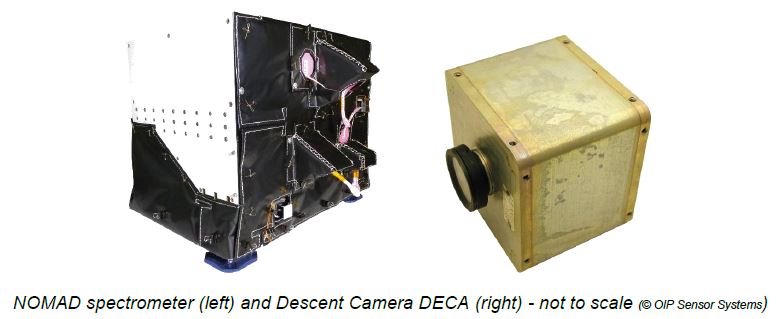OIP is proud to announce today’s successful launch of two instruments, the NOMAD spectrometer and the DECA camera, onboard the ExoMars 2016 mission from Baikonur Cosmodrome, Baikonur, Kazakhstan.
ExoMars 2016, a joint endeavor between the European Space Agency (ESA) and the Russian Federal Space Agency (Roscosmos), scheduled to arrive at Mars in October 2016, consists of a Trace Gas Orbiter (TGO) plus and entry, descent and landing demonstrator module (EDM), known as Schiaparelli.
The successful launch marks the start of a long cruise phase, planned to end in October 2016, when the spacecraft composite carrying TGO and EDM arrives at Mars. The EDM will be released on October 16th, 2016, to land on Mars 3 days later. The TGO will continue its journey through an aerobraking phase lasting approximately 1 year to enter the correct science orbit around Mars.
NOMAD spectrometer in search of traces of life
The NOMAD (Nadir and Occultation for Mars Discovery) spectrometer was built for ESA by an international consortium led by the Royal Belgian Institute for Space Aeronomy (IASB-BIRA, Brussels, Belgium) as Principal Investigator, OIP Sensor Systems as Industrial Prime and Lambda-X (Nivelles, Belgium) as subcontractor.
The NOMAD instrument is a 3-channel spectrometer suite to conduct a spectroscopic survey of Mars’ atmosphere in the ultra-violet, visible and infrared spectral ranges. This broad coverage enables the detection of the components of the Martian atmosphere (CH4, O3, trace species, isotopes, etc) even in low concentrations. In addition to identifying the constituents of the Martian atmosphere, NOMAD will also map their locations.
From end of 2017 measurements will be carried out in solar occultation, i.e. the instrument points towards the Sun when the Orbiter
The project was funded by the Belgian Federal Science Policy Office (BELSPO).
OIP Sensor Systems’ contribution to ExoMars 2016
For the ExoMars 2016 mission OIP is the industrial prime contractor for the NOMAD instrument. OIP has designed the SO and the LNO channels and the overall NOMAD instrument. The UVIS channel was developed by Lambda-X [Nivelles, Belgium] as subcontractor to OIP, and by Mullard Space Science Laboratory (MSSL) [Holmbury St. Mary, UK]. The NOMAD electronics were designed by the Royal Belgian Institute for Space Aeronomy (BIRA-IASB) [Brussels, Belgium] who also performed the mechanical design of the flip mirror mechanism and the structure, by Open University (OU) [Milton Keynes, UK] and by Instituto de Astrofísica de Andalucía (IAA) [Granada, Spain], and were assembled by Thales Alenia Space-ETCA [Charleroi, Belgium].
OIP has performed the manufacturing, assembly, optical alignment, integration and test of the SO and LNO channels. These channels together with the UVIS channel, the electronics and the flight harness are combined to form the NOMAD instrument. Co-alignment of the different NOMAD channels was also done by OIP. Environmental tests were made at Centre Spatial de Liège (CSL) [Liège, Belgium] and IABG [München, Germany] under OIP responsibility. The NOMAD payload was integrated on the Trace Gas Orbiter (TGO) spacecraft by Thales Alenia Space-Italy [Turin, Italy], mission prime of ExoMars, at the Thales facilities in Cannes (France).
In addition to the spectrometer payload onboard the Trace Gas Orbiter, OIP has a second passenger on the ExoMars 2016 mission. OIP’s visual monitoring camera (DECA) is installed on Schiaparelli, ExoMars’ Entry, Descent and Landing demonstration module (EDM). The DEscent CAmera (DECA) is the re-named flight spare of the VMC (Visual Monitoring Camera), which flew on the Herschel spacecraft (2009). It will image the landing site as it approaches the Martian surface, it will provide a measure of the Martian atmosphere’s transparency and will support the generation of a 3-D topography model of the surface of the landing region for the ExoMars 2018 mission.
DECA, a stand-alone small digital camera with an addressable CMOS array detector providing B&W images, was fully designed, built and tested by OIP, as subcontractor to Thales Alenia Space [Cannes, France].
Harvesting from past experience
The NOMAD instrument underlines and demonstrates once more the successful OIP strategy towards development of highly complex and state-of-the-art opto-electronic space instruments and provides a strong base as partner for future new developments of highly complex and challenging space instrument.
The DECA camera emphasizes on the strong heritage OIP gained in the last decades in producing small monitoring cameras that operate in extraordinary conditions. Already from the late 90ies, OIP was involved in the development of miniature monitoring cameras with successful flights onboard Teamsat, XMM-Newton, Cluster-II, Proba, Mars-Express and Herschel-Planck. The camera onboard Mars-Express was turned into Mars Webcam and is still producing nice images of our red neighbor. Last month the cameras onboard Cluster-II were – 16 years after final operation – awoken from hibernation and still functioned as expected! This underlines OIP’s expertise in delivery high quality instruments.



Leave a Reply